Related Research Articles
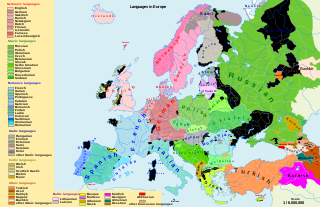
There are over 250 languages indigenous to Europe, and most belong to the Indo-European language family. Out of a total European population of 744 million as of 2018, some 94% are native speakers of an Indo-European language. The three largest phyla of the Indo-European language family in Europe are Romance, Germanic, and Slavic; they have more than 200 million speakers each, and together account for close to 90% of Europeans.
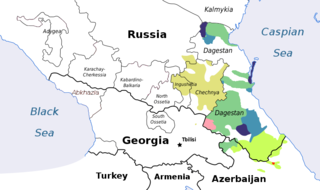
The Northeast Caucasian languages, also called East Caucasian, Nakh-Daghestani or Vainakh-Daghestani, or sometimes Caspian languages, is a family of languages spoken in the Russian republics of Dagestan, Chechnya and Ingushetia and in Northern Azerbaijan as well as in Georgia and diaspora populations in Western Europe and the Middle East.
Khams Tibetan is the Tibetic language used by the majority of the people in Kham. Khams is one of the three branches of the traditional classification of Tibetic languages. In terms of mutual intelligibility, Khams could communicate at a basic level with the Ü-Tsang branch.
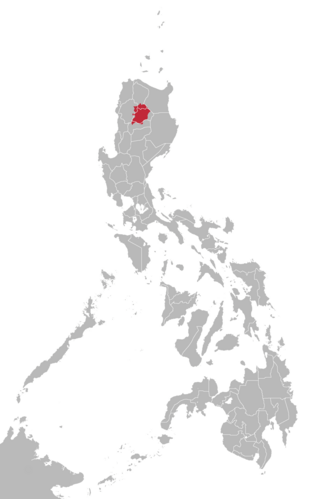
Kalinga is a dialect continuum of Kalinga Province in the Philippines, spoken by the Kalinga people, alongside Ilocano. The Banao Itneg variety is not one of the neighboring Itneg languages.
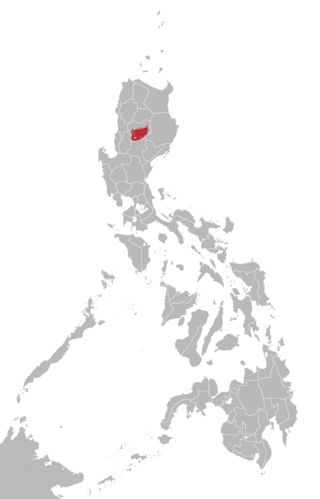
Ifugao or Batad is a Malayo-Polynesian language spoken in the northern valleys of Ifugao, Philippines. It is a member of the Northern Luzon subfamily and is closely related to the Bontoc and Kankanaey languages. It is a dialect continuum, and its four main varieties—such as Tuwali—are sometimes considered separate languages.

Bontoc (Bontok) is the native language of the indigenous Bontoc people of the Mountain Province, in the northern part of the Philippines.
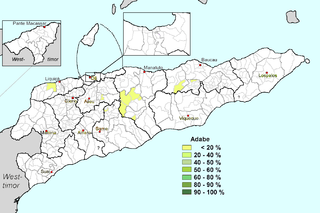
Wetarese is an Austronesian language of Wetar, an island in the south Maluku, Indonesia, and of the nearby islands Liran and Atauro, the latter island separate from the mainland of East Timor, north of Dili.
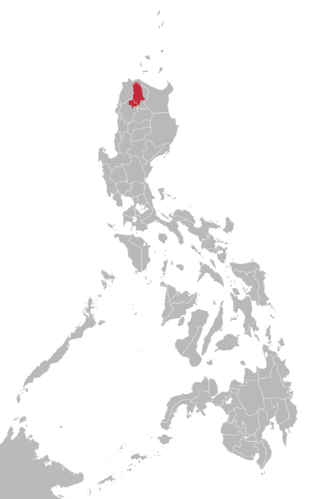
Isnag is a language spoken by around 40,000 Isnag people of Apayao Province in the Cordillera Administrative Region in the northern Philippines. Around 85% of Isnag are capable of reading the Isnag language. Many Isnag speakers also speak Ilocano.
The Ngbandi language is a dialect continuum of the Ubangian family spoken by a half-million or so people in the Democratic Republic of Congo and in the Central African Republic. It is primarily spoken by the Ngbandi people, which included the dictator of what was then known as Zaire, Mobutu Sese Seko.

The Dargin languages consist of a dialect continuum of Northeast Caucasian languages spoken by the Dargin people in southcentral Dagestan. Kajtak, Kubachi, Itsari, and Chirag are often considered dialects of the same Dargin/Dargwa language. Ethnologue lists these under a common Dargin language, but also states that these may be separate languages from Dargwa proper.
Kaitag is a Northeast Caucasian language spoken in Dagestan, Russia. It has sometimes been considered a divergent dialect of Dargwa due to it being part of the Dargin dialect continuum. The Routledge Ethnographic Handbook (2017) divided Kaitag into two dialects: northern (Magalis-Kaitak) and southern (Karakaitak). Recent results of the Association of the Russian Sociolinguists (2021) further developed it into three dialects: Lower Kaitag, Upper Kaitag and Shari.
Kubachi is a language in the Dargin dialect continuum spoken in Dagestan, Russia, by Kubachi people. It is often considered a divergent dialect of Dargwa. Ethnologue lists it as a separate language.
Chirag is a language in the Dargin dialect continuum spoken in Dagestan, Russia. It is often considered a divergent dialect of Dargwa. Ethnologue lists it under the dialects of Dargwa but recognizes that it may be a separate language.
Kgalagadi is a Bantu language spoken in Botswana, along the South African border. It is spoken by about 40,000 people. In the language, it is known as Shekgalagari.

Maʼya, or Misool-Salawati Maʼya, is an Austronesian language of the Raja Ampat islands in Southwest Papua, Indonesia. It is spoken by about 6,000 people in coastal villages on the islands Misool, Salawati, and Waigeo. It is spoken on the boundary between Austronesian and Papuan languages.
Dargwa is a Northeast Caucasian language spoken by the Dargin people in the Russian republic Dagestan. It is the literary and main dialect of the dialect continuum constituting the Dargin languages.
Mro-Khimi is a Kuki-Chin language of Burma spoken by the Mro-Khimi people. The Mro-Khimi varieties share 91% to 98% lexical similarity. Mro-Khimi is 86%–90% lexically similar with the Likhy variety of Eastern Khumi, 81%–85% with Lemi variety of Eastern Khumi, and 77%–81% with Kaladan Khumi.
Kayan is a dialect cluster spoken by the Kayan people of Borneo. It is a cluster of closely related dialects with limited mutual intelligibility, and is itself part of the Kayan-Murik group of Austronesian languages.
Agusan is a Manobo language of northeastern Mindanao in the Philippines.

Isinai is a Northern Luzon language primarily spoken in Nueva Vizcaya province in the northern Philippines. By linguistic classification, it is more divergent from other Central Cordilleran languages, such as Kalinga, Itneg or Ifugao and Kankanaey.
References
- 1 2 Linguist List, lang description, Dargwa
- ↑ Dargwa at Ethnologue (25th ed., 2022)

